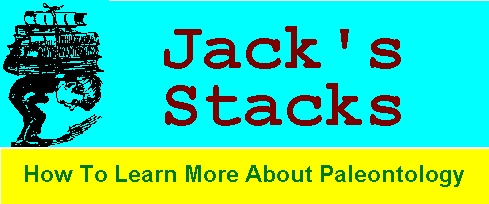

Would you like to know more in-depth information about the major mass extinctions in earth history? Then Mass Extinctions and Their Aftermath is the book you’ve been looking for. This technical presentation was written by A. Hallam and P. B. Wignall and published in 1997 by Oxford University Press. Mass Extinctions and Their Aftermath is a 320-page soft cover book retailing for $40.00.
The authors are both from Great Britain. Hallam is Professor of Geology at the University of Birmingham and Wignall is Lecturer at the University of Leeds. Their backgrounds include paleontology, geology, and extinction.
Hallam and Wignall explain their purpose in writing Mass Extinctions and Their Aftermath in the Preface. They note that numerous technical papers and many books of public interest have been written on mass extinction since 1980. Most of these works were specifically about the end Cretaceous extinction event, having been sparked by the impact theory for the extinction of the dinosaurs. Hallam and Wignall wrote this book in an attempt to “put the all-too-celebrated end-Cretaceous event into perspective.” In decreasing order of magnitude, the Big Five are: the end Permian, the end Ordovician, the late Devonian, the end Triassic, and the end Cretaceous.
As I stated earlier, Mass Extinctions and Their Aftermath is a technical book. There are many technical terms that are not defined and there is no glossary. Obviously, the book is intended for professionals and students of geology. Each extinction event is discussed in terms relevant to its particular situation. That is, references are made to specific geologic formations and to specific faunal (or floral) groups related to the extinction event. These terms and names will be unfamiliar to all but specialists knowledgeable about the period under discussion. The end Ordovician event chapter is no easier for us since globally accepted (non-Cincinnatian) terminology is used.
The possible causes for each mass extinction are proposed based upon many forms of evidence including the ratios of various chemical isotopes. These isotopes are analyzed from fossils or from the sediments themselves. A knowledge of chemistry will be helpful to readers here although the authors provide explanations in the first chapter. The explanations are not of an elementary nature however.
Mass Extinctions and Their Aftermath begins with an introductory chapter that includes historical background and discussion of some of the more recent general works on the topic. This chapter also defines some of the specialized terms related to extinction as well as the methods used to analyze causes.
Following the first chapter, Mass Extinctions and Their Aftermath is organized chronologically beginning with the oldest evidences of mass extinctions. A few minor mass extinction events are covered in addition to each of the Big Five.
Of local interest will be the chapter that discusses the Ordovician mass extinctions. This one ranks as the second largest mass extinction with the loss of 57% of worldwide genera. Actually there were multiple extinction events that ended the Ordovician. Since the youngest of our local bedrock formations is older than the actual end of the Ordovician worldwide, we miss out somewhat on the evidence.
The Ordovician chapter, as do all others, details the effects on specific organisms. It is interesting to note that not all organisms show extinction declines at precisely the same time. If you had an image in your mind that mass extinctions all occur instantly, you will find evidence to the contrary here.
Following discussion of the effects on the fauna, Hallam and Wignall present information about the boundary sections that include the extinction horizons. The stratigraphic sections for the Ordovician chapter include sections in Scotland, Arctic Canada, and South China. Paleogeography as well as the description of the strata is detailed here.
It is shown that the chemical and sedimentary analyses that provide evidence for cause do not all occur at the same time. As with the other forms of analysis, the sedimentary evidence indicates varying conditions.
Perplexing though it may be, the proposed extinction mechanisms—global cooling, oceanic regression, and ocean chemistry changes—can not individually explain the resultant patterns of faunal losses. An intense period of glaciation at the end of the Ordovician is credited as the cause of this event. One pulse of extinction happened at the onset of the glacial conditions and a second pulse happened at the end of the glaciation. The various mechanisms revealed by the geological and paleontological evidence occurred at different times and affected different fauna accordingly. The conclusion can only be that this mass extinction had multiple causes over time.
Mass Extinctions and Their Aftermath will give the advanced reader more insight into what is known about the major global mass extinctions. It should also impress readers with the complexity and multicausality of these life altering events. This book has much to offer to those interested in extinctions but the technical nature of the text puts the message beyond the reach of most casual readers.